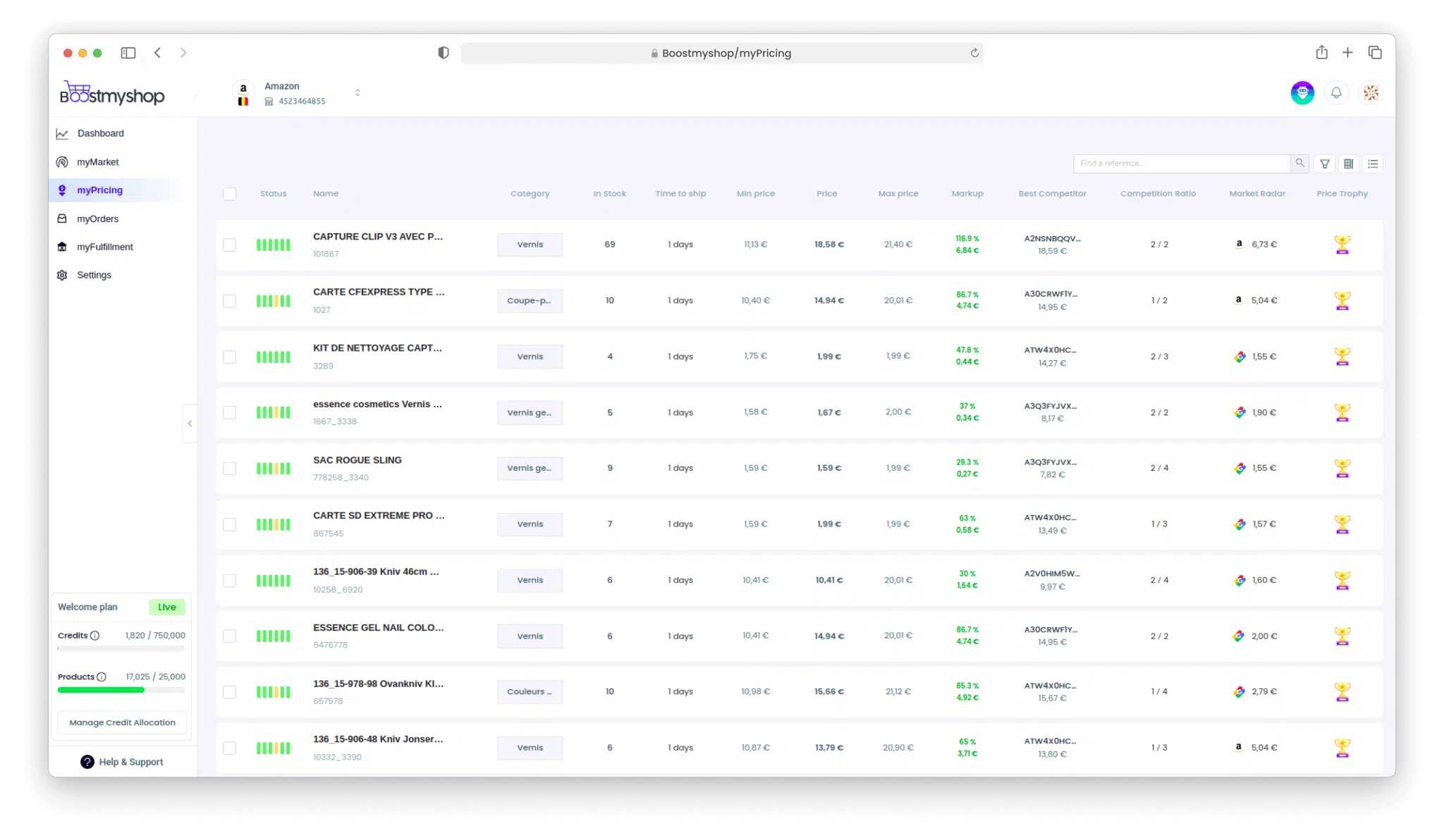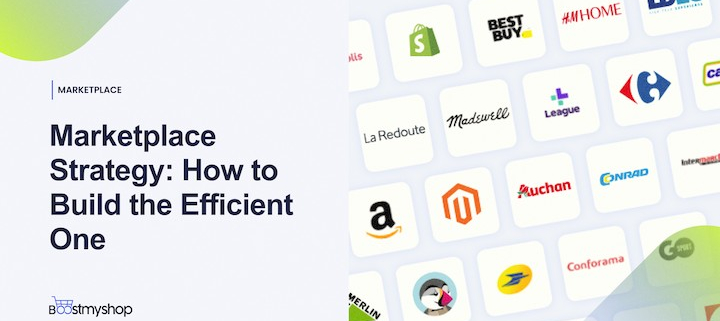Marketplace Strategy: How to Build the Efficient One
As the significance of online marketplaces in e-commerce continues to soar, effectively navigating the competitive landscape has become crucial for success. In this article, we will explore the intricacies of crafting an efficient marketplace strategy that not only fuels sustained growth but also establishes a unique brand identity.
The growing number of brands and retailers venturing into marketplaces underscores the increasing importance of this approach, with a notable 46% rise in companies entering the marketplace in Europe from 2020 to 2021. Additionally, the 2023 Enterprise Marketplace Index by Mirakl reveals that entreprise marketplace and dropship businesses grew by 38% year-over-year in 2022, more than 6 times the rate of overall ecommerce. Join us as we uncover the secrets to building a well-structured marketplace strategy that can revolutionize your business.
Defining Your Marketplace Strategy
The Foundation: Clarifying Your Business Goals and Objectives
Before embarking on the journey of crafting a marketplace strategy, it’s imperative to have a crystal-clear understanding of your business goals and objectives. Are you aiming for rapid expansion, customer loyalty, or niche dominance? Defining these parameters shapes the very core of your strategy, providing a roadmap for all subsequent decisions.
Niche Identification: Targeting the Right Marketplace
In a world saturated with choices, honing in on your target audience is an art that can’t be overlooked. Precise niche identification allows you to cater to a specific set of needs and preferences, resonating deeply with your users and differentiating your marketplace For example: Zalando for fashion, ManoMano or Leroy Merlin for home and garden, and Fruugo or PcComponentes for electronics.
Competitor Analysis: Gaining Insights from Market Rivals
Peering into the strategies of your competitors might seem like a simple task, but it’s an invaluable one. A thorough competitor analysis helps you understand what’s working, what’s not, and where you can innovate. By learning from their successes and failures, you can craft a strategy that stands on the shoulders of experience.
Key Components of an Efficient Marketplace Strategy
Product Selection: Curating a Stellar Offerings Portfolio
Learn how to select products: Your product offerings define your marketplace’s identity. Carefully curate a portfolio that not only caters to your audience’s needs but also aligns with your business goals. Strive for diversity, quality, and uniqueness – a mix that entices users and keeps them coming back for more.
- Strategic Product Selection: Choose products for the marketplace strategically. Start with a small number of products in your strongest category. Consider factors like higher margins and low return rates.
- Assess Demand and Differentiation: Evaluate demand for selected products. Ensure products stand out from similar offerings.
- Optimize Product Display: Make your products visually appealing to stand out. Tailor product data and content for the marketplace. Categorize products effectively and accurately. Utilize tools like a feed manager for efficient management.
- Proper Listing: Upload your product catalog to the marketplace. Place each item in the appropriate category. Enable easy discovery for shoppers.
- Analyze for Growth: Collect and analyze data, reviews, and feedback. Learn from both successes and mistakes. Improve delivery services and content based on feedback. Consider new advertising campaigns based on insights.
- Continuous Innovation: Gain experience and customer satisfaction. Don’t hesitate to experiment with new products. Explore opportunities in other marketplaces.
Pricing Strategies: Finding the Sweet Spot for Competitive Advantage
Pricing isn’t just about numbers – it’s about perception, value, and positioning. Striking the right balance between affordability and perceived value is a delicate dance. A well-calibrated pricing strategy can make your marketplace the go-to destination for your target audience.
Leveraging Technology for Strategy Efficiency
Tech Stack Essentials: Tools to Streamline Operations and User Experience
In the digital age, technology is your ally. From user-friendly interfaces to robust backend systems, your tech stack plays a pivotal role in ensuring seamless operations and a delightful user experience. Invest in tools that enhance efficiency and user engagement.
Automation Advantage: How to Scale while Maintaining Quality
As your marketplace expands, manual processes become cumbersome. Embrace automation to streamline operations, reduce human error, and maintain quality as you scale. Automation also frees up resources for strategic tasks that require a human touch.
Boostmshop myPricing: A Quality Technical Partner for Marketplace strategy
Boostmyshop myPricing enhances marketplace strategies by providing competitive pricing analysis, real-time market trend tracking, dynamic pricing capabilities, and automated price updates across multiple platforms. The software optimizes pricing through advanced algorithms, considering sales performance and market trends. It enables promotional pricing campaigns to drive sales while maintaining profitability. By leveraging myPricing, businesses can make data-driven pricing decisions, stay competitive, and maximize revenue potential in the marketplaces.
User-Centric Approach for Marketplace Success
Seamless User Experience: Navigating the Platform with Ease
A user-centric approach is non-negotiable. Craft an intuitive, user-friendly platform that ensures a seamless journey for your users – from browsing to check out. Minimize friction points, optimize navigation, and create an experience that keeps users engaged.
Trust and Safety: Building Credibility and Confidence for Buyers and Sellers
Trust is the cornerstone of any successful marketplace. Implement robust security measures, transparent policies, and a robust review system to instill confidence in both buyers and sellers. A secure environment fosters long-term relationships.
Feedback Loop: Harnessing Reviews for Continuous Improvement
User feedback isn’t just about testimonials – it’s a roadmap for improvement. Actively encourage and respond to user feedback, making iterative improvements to your marketplace. Listening to your users and implementing their suggestions creates a bond of reciprocity.
Marketing and Promotion Strategies
Branding in Your Marketplace: Creating a Memorable and Trustworthy Image
Branding isn’t just about a logo – it’s about the story you tell. Craft a brand identity that resonates with your audience’s values and aspirations. A strong brand builds trust, fosters loyalty, and sets your marketplace apart from the competition.
Content Marketing: Educating and Engaging Users through Valuable Content
Educational and engaging content is the currency of the digital age. Develop a content marketing strategy that not only informs users about your offerings but also adds value to their lives. Whether it’s blog posts, videos, or guides, content builds a loyal following.
Social Media Strategies: Connecting with Your Audience Where They Are
Social media isn’t just a place to post updates – it’s a platform to build relationships. Develop a cohesive social media strategy that resonates with your target audience. Engage with users, respond to their queries, and create a sense of community around your brand.
One such hit using social media is none other than Instant Pot. Primarily a product from Amazon, by leveraging the power of Facebook, Instagram, and Pinterest, Instant Pot created an influential online presence. By sharing recipes, user-generated content, and cooking tips, Instant Pot engaged its audience effectively and collaborations with influencers expanded its reach, generating buzz and transforming the brand into a household name, revolutionizing the cooking industry. Instant Pot’s success showcases the power of social media as a crucial marketing tool.
Scaling Up Your Marketplace Strategy
Scalability is crucial for marketplace growth and increased traffic. Prepare for higher demand, larger user volumes, and increased traffic. Adapt your strategy to expand internationally and reach global markets by understanding cultural nuances, legal requirements, and market dynamics. Anticipate challenges such as technical glitches, increased competition, and shifting user preferences. Develop contingency plans to maintain marketplace efficiency.
Conclusion
Crafting an efficient marketplace strategy is a journey that demands dedication and insight. By aligning your goals, understanding your audience, and leveraging technology, you lay a solid foundation for success.
Remember, the marketplace landscape is dynamic. Ongoing strategy enhancement is essential. Stay curious, stay updated, and continue seeking ways to optimize and innovate.
With insights gained from this comprehensive guide, you’re equipped to build a marketplace strategy that not only shines today but also stands the test of time. Implement your strategies with conviction and watch your efficient marketplace strategy yield remarkable results. Your journey to marketplace success has just begun.
Increase sales in your marketplaces
Protect margins and increase sales using Boostmyshop myPricing.
Book a Demo



